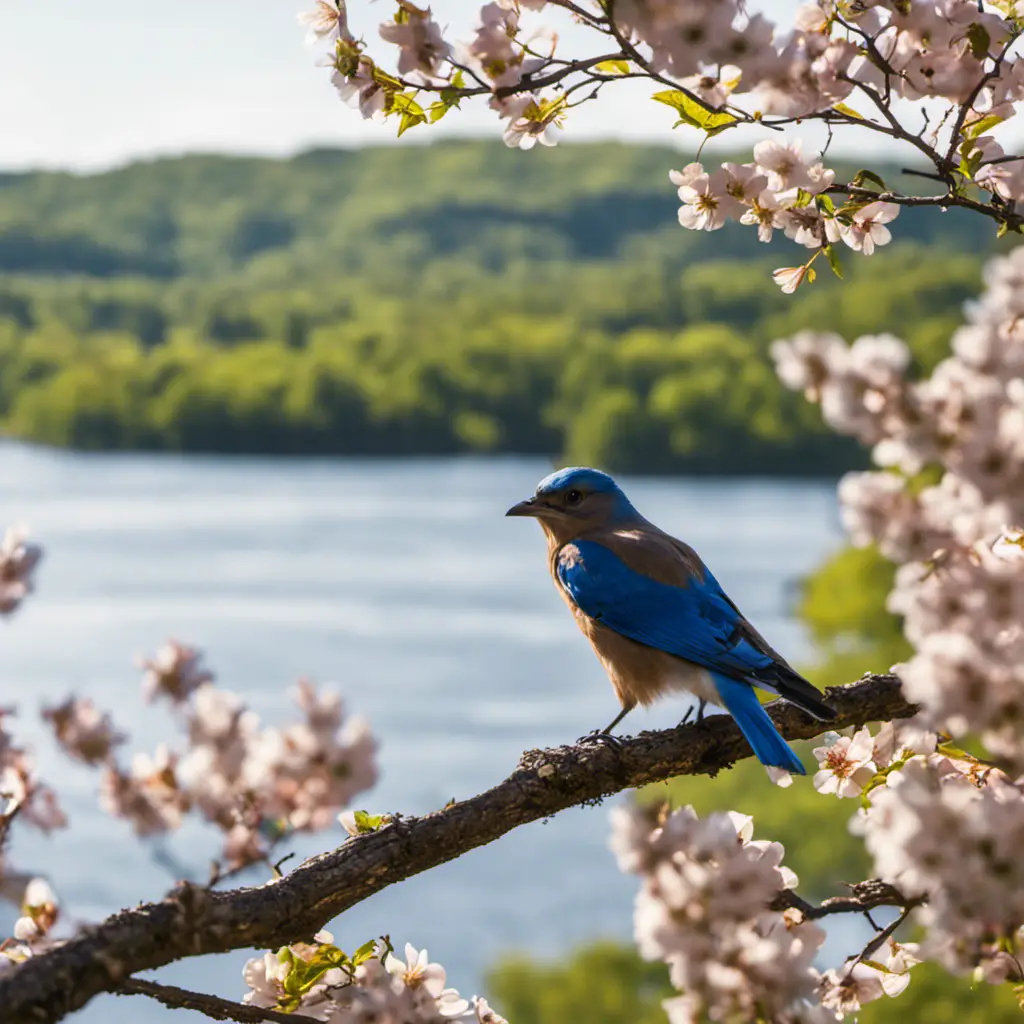Did you know that there are over 270 species of birds that call Maine home? In this blog post, we will take a look at some of the most common birds in the state. These birds can be found in all corners of Maine, from the mountains to the sea!
Common Backyard Birds of Maine:
Backyard birds in Maine all year: American Crow, Black-capped Chickadee, American Goldfinch, Blue Jay, Mourning Dove
Backyard birds in Maine in summer: Song Sparrow, Common Yellowthroat, American Robin, Gray Catbird, Cedar Waxwing
Backyard birds in Maine in winter: American Tree Sparrow
1.) American Crow

American Crows are the largest member of the crow family. They can be found in woodlands near water sources such as lakes, rivers, and wetlands. American Crows typically eat insects, small mammals, reptiles, amphibians, fish, nuts, and berries.
These birds are known to be very intelligent and have been known to use tools to help them obtain food. American Crows are also known to be very vocal birds with a variety of different calls that they use to communicate with each other.
Some of the calls that these birds make include cawing, croaking, and chattering. The bird pictured above is an American Crow that was photographed in Maine. This bird has the typical black plumage that is characteristic of this species.
American Crows are typically around 20 inches in length with a wingspan of approximately 40 inches. These birds can be found throughout the United States and Canada.

2.) Black-capped Chickadees
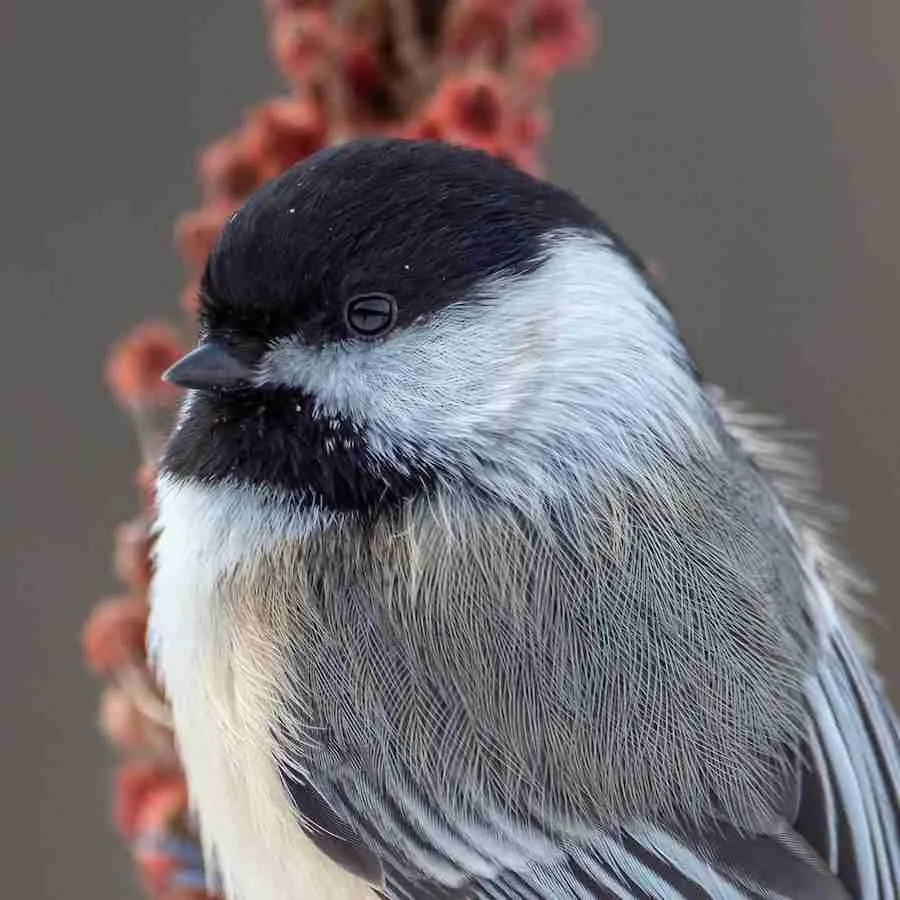
Black-capped Chickadees are small birds with big personalities. They are acrobatic, fearless, and curious, making them a joy to watch. Chickadees are one of the few bird species that will actually approach humans and seem unafraid.
Black-capped Chickadees are easily identified by their black cap and white cheeks. They have gray bodies with a white chest and a long tail. Chickadees are about five inches long and have a wingspan of about eight inches.
Chickadees eat mostly insects but will also feed on seeds and berries. They forage for food in trees, shrubs, and on the ground. Black-capped Chickadees are known to cache food for later.

3.) American Goldfinch
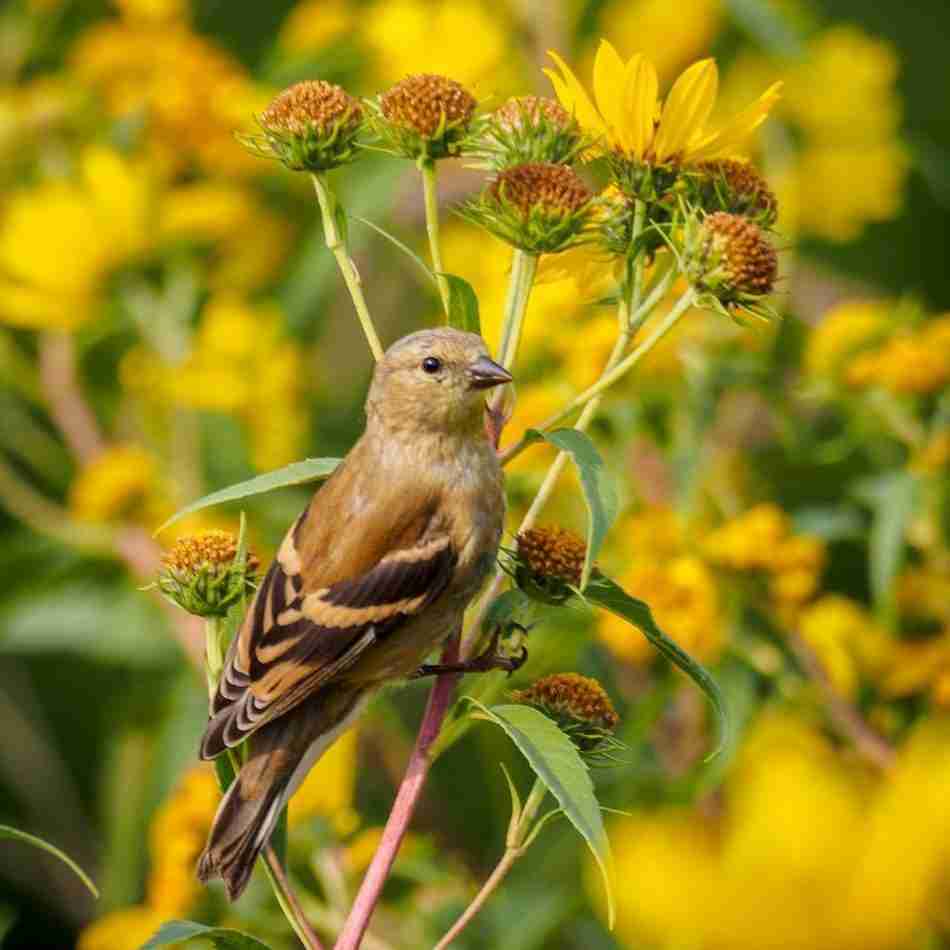
The American Goldfinch, also known as the “wild canary”, is a small North American finch. Adult goldfinches are about five inches long and have a wingspan of seven to eight inches. They are bright yellow with black wings and tail. The male has a black cap and the female has a brown cap.
The goldfinch is one of the few North American birds that undergoes a complete molt, meaning it loses all its feathers and grows new ones, twice a year.

4. ) Blue Jays
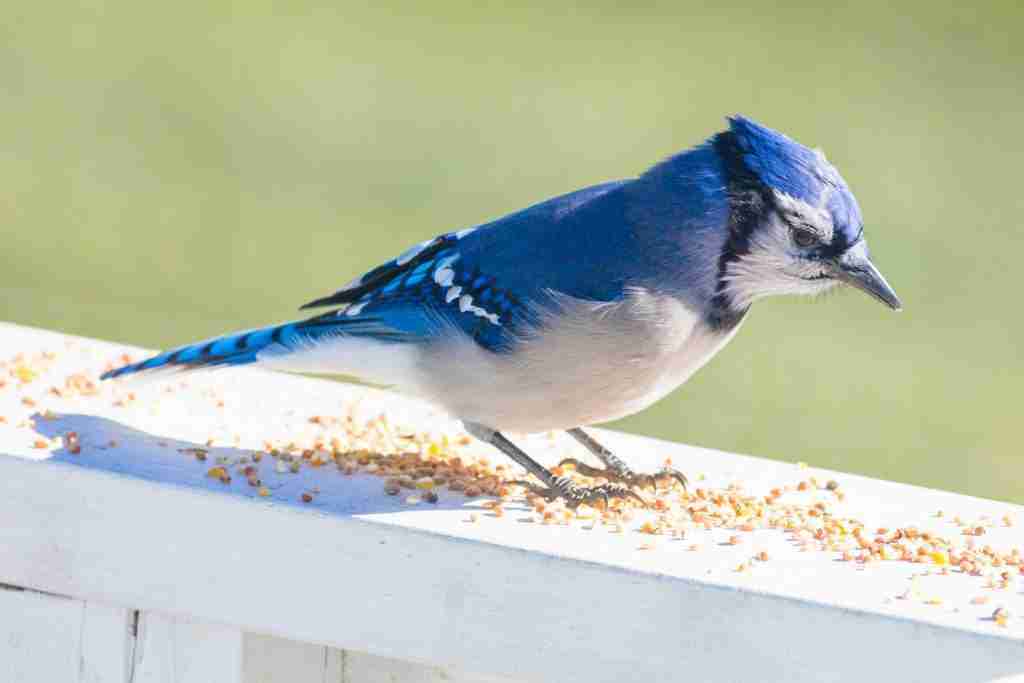
Blue Jays are one of the most easily recognizable birds in North America. They are large, stocky birds with blue feathers and a white chest. Their tail is long and pointed, and they have a black “mask” around their eyes. Blue Jays are found in woods and forests across the United States and Canada.
They eat acorns, nuts, and berries, and will also eat insects and small animals. Blue Jays are about 12 inches long and weigh around 12 ounces. They live in pairs or small groups. Blue Jays are known for their loud “caw” calls, which they use to communicate with each other.
They are also known for their intelligence and ability to imitate the sounds of other animals. Blue Jays are not endangered and their population is stable.

5.) Mourning Doves
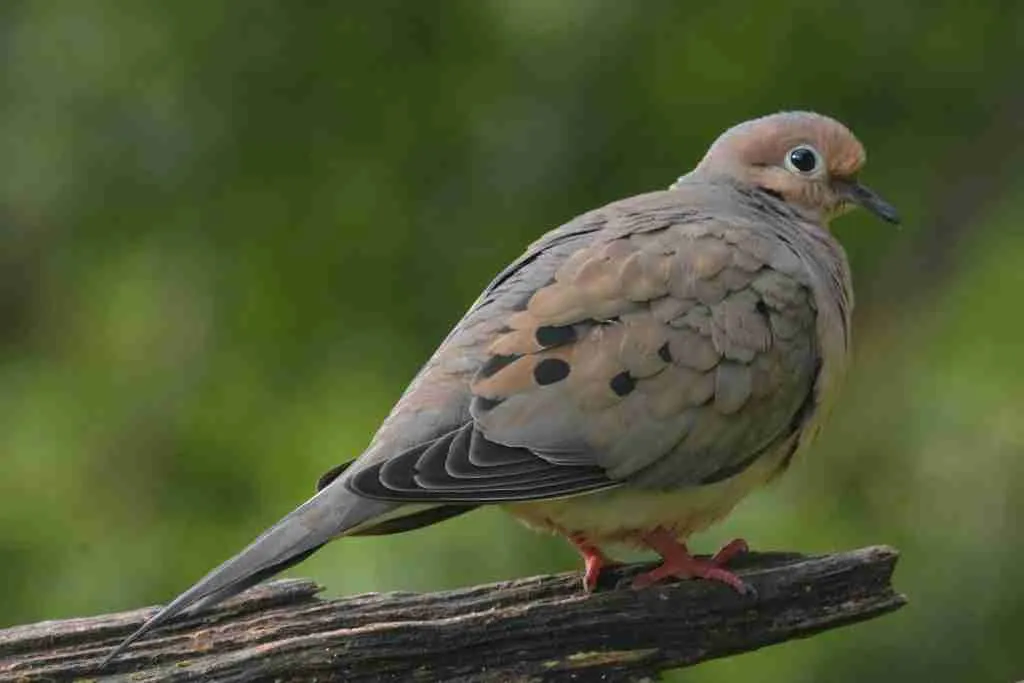
Mourning Doves are one of the most common birds in North America. They are medium-sized birds with long tails and pointed wings. The adults have gray-brown upperparts, pale underparts, and a black mark on their throats.
Their diet consists mostly of seeds, but they will also eat insects and berries. Mourning Doves typically live in open areas such as fields, parks, and gardens.
They build their nests in trees or shrubs. These birds are very shy and will usually fly away when humans get too close. Mourning Doves are one of the few bird species that mate for life.

6.) Northern Cardinals
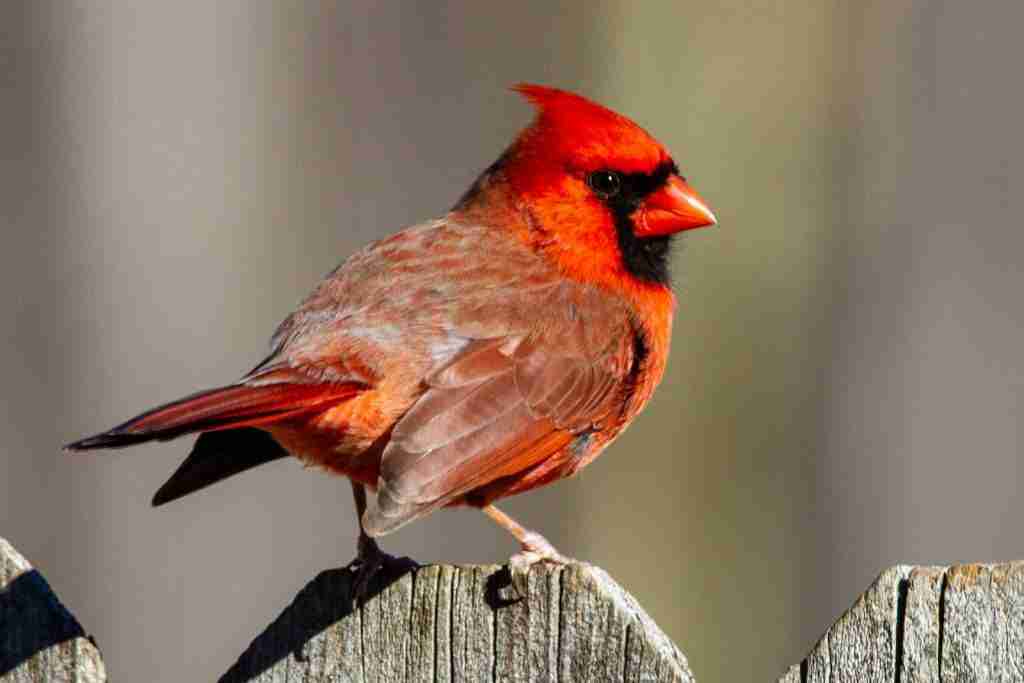
Cardinals are one of the most easily recognizable birds in Maine. They are medium-sized songbirds with stout bodies and long tails. Males are bright red with a black face, while females are light brown with red streaks. Northern Cardinals are found in woodlands, edges, and backyards across the state.
They eat mainly seeds and insects. Cardinals are social birds and often form pairs or small groups. They are also one of the few bird species that sing throughout the year.
Cardinals are active during the day and are most often seen perching in trees or on bushes. During the winter, they sometimes form large flocks.

7.) Cedar Waxwing
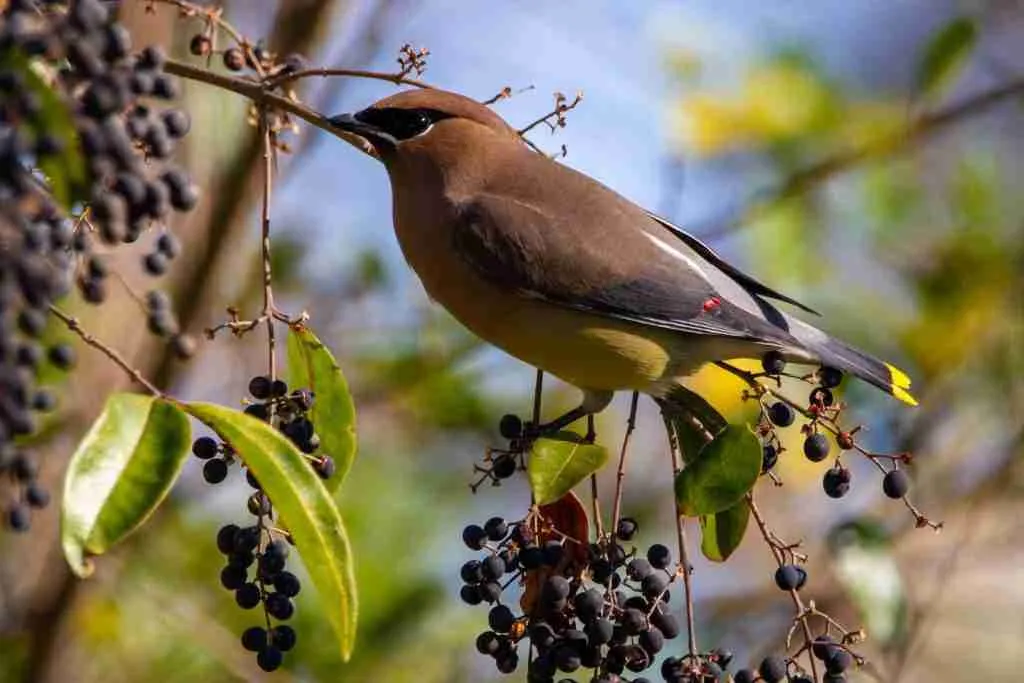
The Cedar Waxwing is a sleek and sociable bird, easily identified by its distinctive plumage. These birds are medium-sized, with long tails and pointed wings. They are grayish brown in color, with a pale yellow belly and black mask.
The tips of their tail feathers are often wax-like or red, hence their name. Cedar Waxwings are found in open woodlands and forest edges across North America. They are most common in the eastern and central United States.
These birds feed mainly on fruits and berries, but they will also eat insects, especially in the summer months.
Cedar Waxwings are known for their cooperative breeding behavior; several pairs will often nest together and help care for the young. These birds are not currently considered threatened or endangered.
However, like many other bird species, they are impacted by habitat loss and fragmentation. You can help protect Cedar Waxwings by supporting efforts to conserve their natural habitats.

8.) Red-winged Blackbird
(Agelaius phoeniceus)
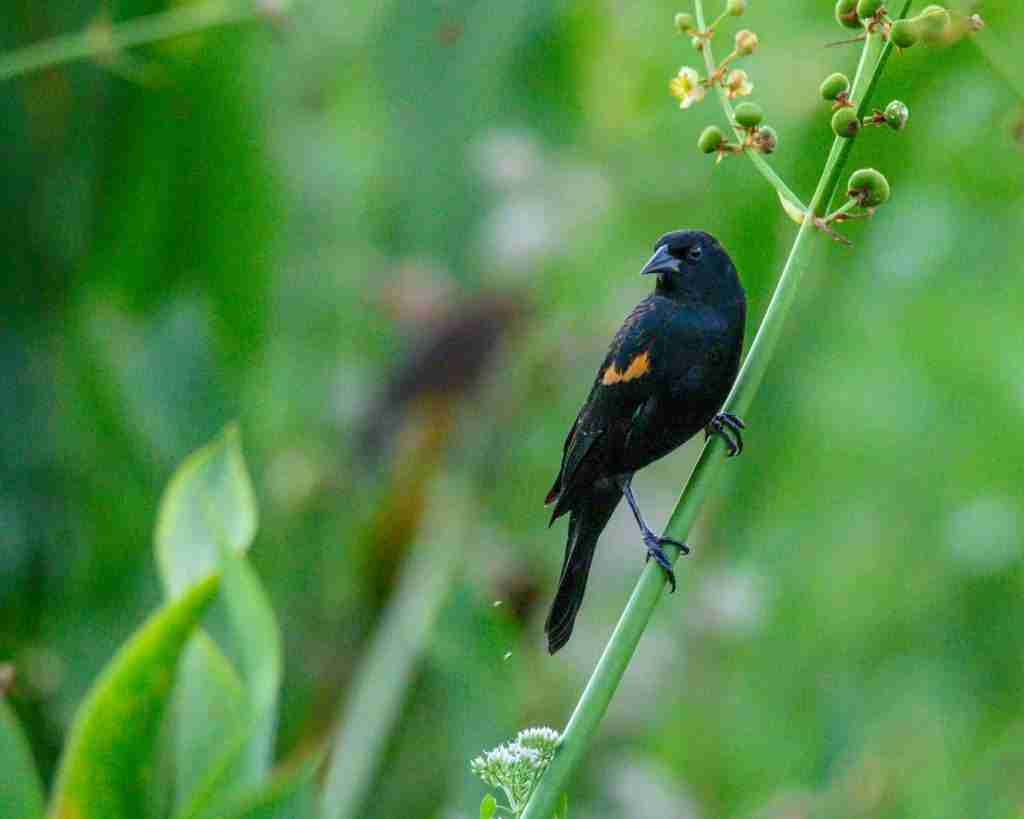
The red-winged blackbird is a species of true blackbird in the family Icteridae. The adult male has distinctive red shoulder epaulets and yellow wing bars. Females and immature males are mostly dark with paler mottling on their wings.
These birds breed in marshes from Alaska and Newfoundland south to Mexico. The red-winged blackbird is sexually dimorphic, meaning that the males and females look different.
The adult male has black feathers with red shoulder epaulets and yellow wing bars. The female is mostly dark with some lighter mottling on her wings. The immature male looks like the female but with more mottling on his wings.

9.) Red-breasted Nuthatch

(Sitta canadensis) is a small songbird with a large head, short tail, and stout bill. The back and wings are slate-blue, and the underparts are pale pinkish-buff.
There is a white stripe above the eye and rusty streaks on the sides of the breast. This nuthatch walks headfirst down tree trunks and branches, often hanging upside down. It feeds on insects, spiders, and seeds.
The red-breasted nuthatch breeds in coniferous forests across Canada and the northern United States. In winter, it may form small flocks with other nuthatches and creepers to forage for food.
Tufted Titmouse
Tufted Titmice is a small bird with gray upperparts and pale underparts. It has a black cap and bib, white cheeks, and a long, black tail.
This bird is found in woodlands in the eastern United States. Tufted Titmice eat insects, berries, and nuts. They are about six inches long and weigh one ounce. Tufted Titmice build their nests in trees.
These birds are social and often travel in pairs or small groups. They are known for their loud, distinct song. Tufted Titmice are active year-round and do not migrate.

10.) Gray Catbird
(Dumetella carolinensis)
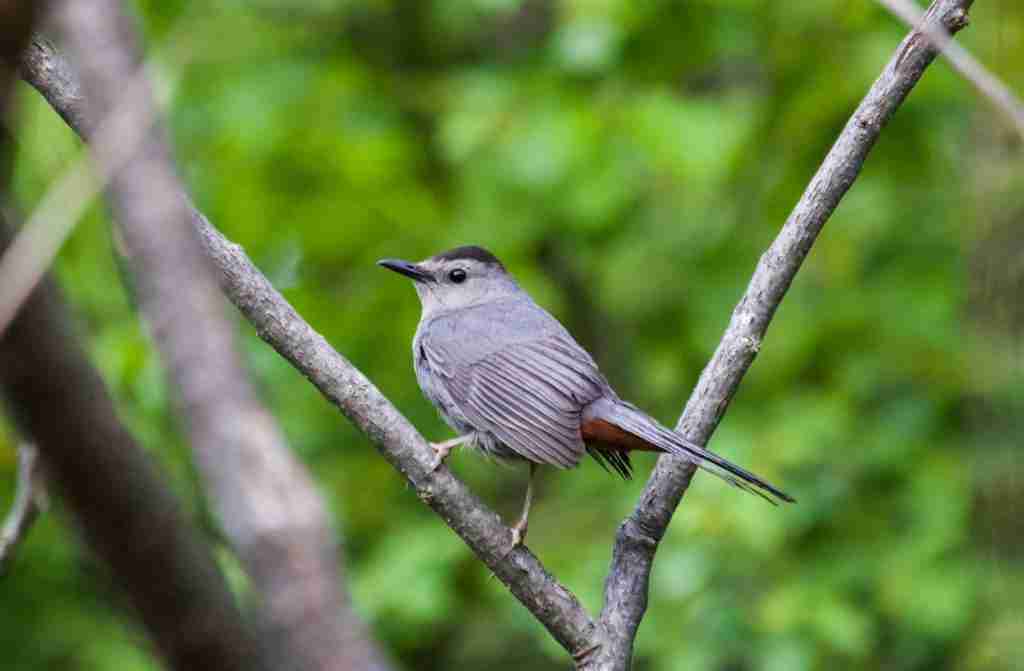
The Gray Catbird is a small songbird with gray plumage and a long tail. It has black wings and tail, and a white underside. Its head is black with a white line above its eyes. It measures about 20 cm in length and weighs between 23-30 grams.
The Gray Catbird is found in North America, from southern Canada to northern Florida. It inhabits woods and edges near forest clearings. It feeds on insects, spiders, berries, and fruits.
The Gray Catbird is a shy bird that is often seen alone or in pairs. It is known for its cat-like call which sounds like “meow”. It is also known to imitate the calls of other birds. The Gray Catbird breeds in May and June.
Its nest is built in trees or shrubs, and consists of twigs, leaves, grass, and hair. The female lays between two and six eggs which are incubated for about 14 days.

11.) Downy Woodpecker
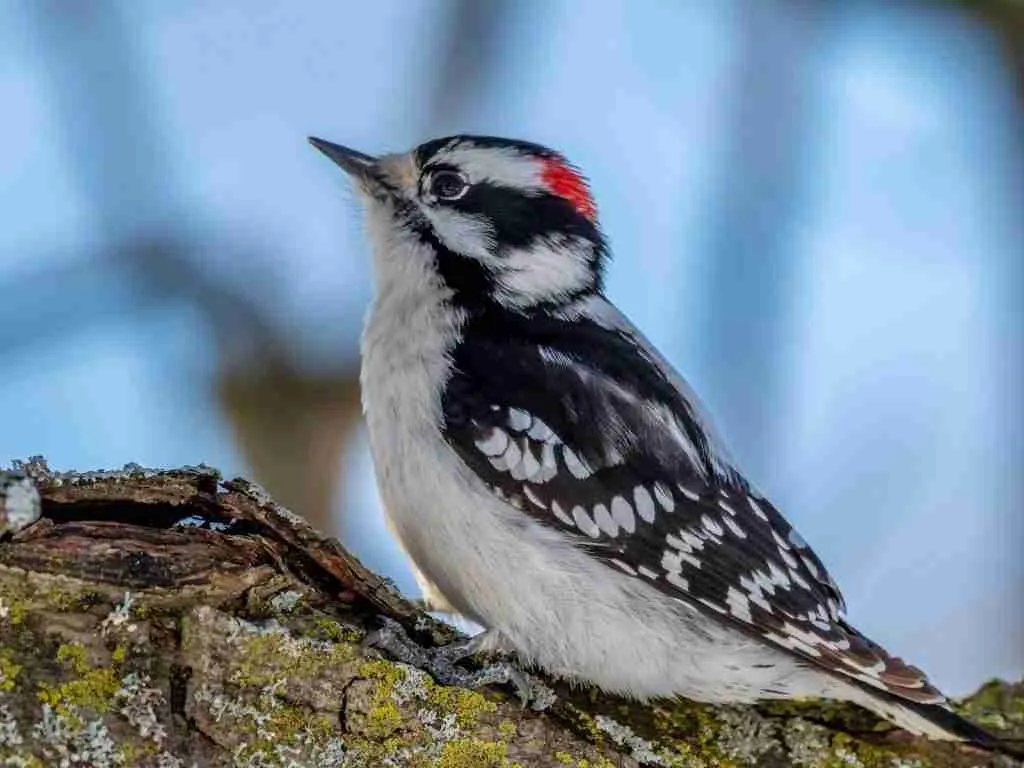
The Downy Woodpecker is the smallest woodpecker in North America, measuring just six to seven inches in length. As its name suggests, this bird has a downy feathers on its back, which are black with white spots.
The belly and breast of the Downy Woodpecker are white, while its head is black with a white stripe running down the middle. Both male and female Downy Woodpeckers have these same physical characteristics.
The Downy Woodpecker is found in wooded areas across North America, from Alaska and Canada all the way down to Mexico. These birds typically nest in trees, using their strong beaks to drill holes into the wood. The Downy Woodpecker feeds on insects, as well as the occasional fruit or nut.
The Downy Woodpecker is a relatively small bird, but it is still quite vocal. These birds make a “chick-a-dee-dee” sound that is often used to identify them.
The Downy Woodpecker is also known for its drumming behavior, in which it will tap its beak rapidly on a tree trunk or branch. This drumming can be quite loud, and is used as a way to attract mates and establish territory.

12.) Eastern Phoebe

The Eastern Phoebe is a small songbird with drab brown upperparts and pale underparts. It has a black bill, white throat, and dark wings with two white bars. This bird is found near streams in wooded areas of eastern North America.
Its diet consists of insects which it catches by perching on a branch and then flying out to catch them in midair. The Eastern Phoebe is about six inches long and has a wingspan of nine inches.
It nests in cavities, often using abandoned nesting sites of other birds such as woodpecker holes. These birds are generally found singly or in pairs. During the breeding season, males will try to attract females by making a nest and calling to them.
The female will then choose the male she wishes to mate with based on the quality of his nest. These migratory birds will sometimes move to lower elevations in winter.

13.) Song Sparrow
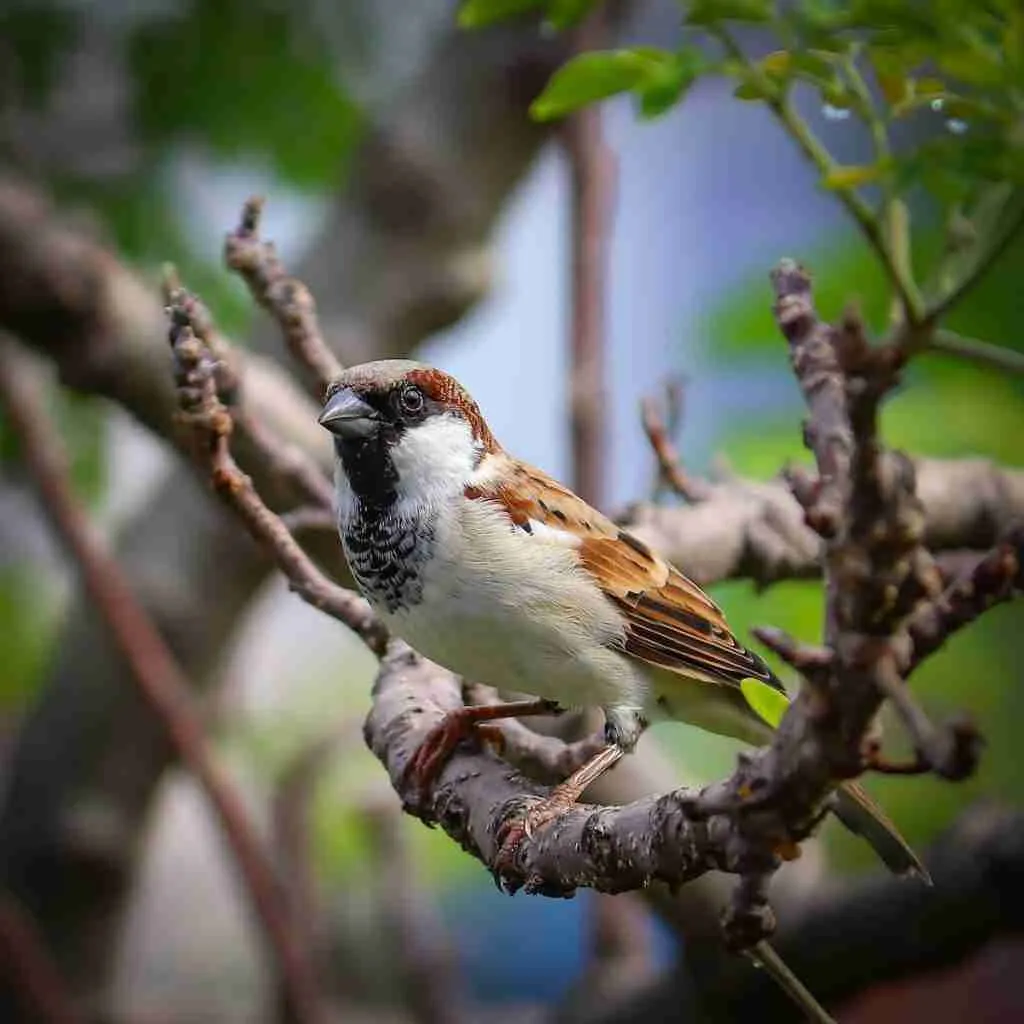
Song Sparrows are one of the most widespread and commonly-seen birds in North America. Though they can be found in a variety of habitats, they are most often seen in open areas with some brushy cover nearby.
Song Sparrows have a streaked brown back and breast, with a white belly and grayish head. They also have a long, notched tail and a heavy bill. Male and female Song Sparrows look alike.
Song Sparrows eat mostly insects and seeds. During the summer, they eat lots of insects, including beetles, grasshoppers, crickets, and caterpillars. In the wintertime, when there are fewer insects around, they switch to eating more seeds. Song Sparrows forage, or look for food, on the ground.

14.) Common Yellowthroat
(Setophaga petechia)

The Common Yellowthroat is a small songbird with a distinctive black mask across its yellow face. It is one of the most widespread warblers in North America, breeding from central Alaska to Newfoundland and south to Florida and Mexico. This bird can be found in a variety of habitats including wetlands, meadows, and forests.
The Common Yellowthroat is an insectivore, feeding primarily on caterpillars and other small invertebrates. These warblers are small birds, measuring only about five inches in length.
Despite their small size, they are relatively loud birds with a distinctive song that sounds like “wichety-wichety-wichety.” Common Yellowthroats are social birds and can often be seen in small flocks foraging together.
During the breeding season, these warblers are territorial and will defend their nesting area from other birds. The Common Yellowthroat is an important bird species in North America and is considered to be of least concern by the IUCN Red List.

15.) White-breasted Nuthatch

The White-breasted Nuthatch is a small songbird with a large head, short tail, and strong feet. They are mostly gray with a white breast and belly. The males and females look alike. These birds are found in woodlands across North America.
Nuthatches get their name from their habit of wedging nuts into crevices in trees and then hammering them open with their strong beaks. They also eat insects, spiders, and berries. In the winter, they often form small flocks and forage together.
White-breasted Nuthatches are acrobatic birds that are often seen clinging upside down on tree trunks. They are also able to fly backward! These nimble birds are a joy to watch as they move about in search of food.

16.) Common Grackle
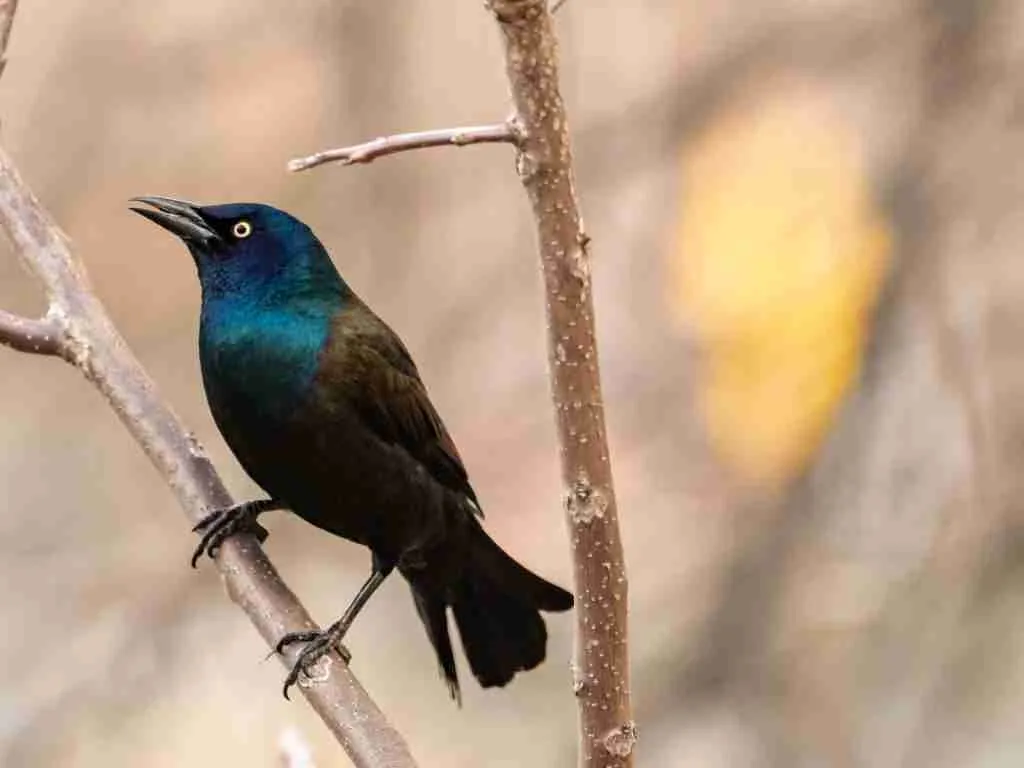
The Common Grackle is a medium-sized bird with a long tail and glossy black plumage. It has a bill that is slightly curved and yellow eyes. The adult male has a purple sheen on its head and neck, while the female has a brownish tint.
These birds are found in open woodlands, wetlands, and gardens. They feed on insects, earthworms, and small fruits. Common Grackles are known to be aggressive towards other birds and will often steal their food. They are also known to destroy crops such as corn and sunflowers.
These birds mate for life and the female lays three to six eggs in a nest made of twigs and leaves. The Common Grackle is a songbird and its call is a harsh, throaty “caw.” These birds are found in North America east of the Rocky Mountains.
They are year-round residents in most of their range, but some northern birds do migrate south for the winter. The Common Grackle is an important bird in Native American mythology and is considered a spirit animal by some tribes.

17.) American Robin
(Turdus migratorius)
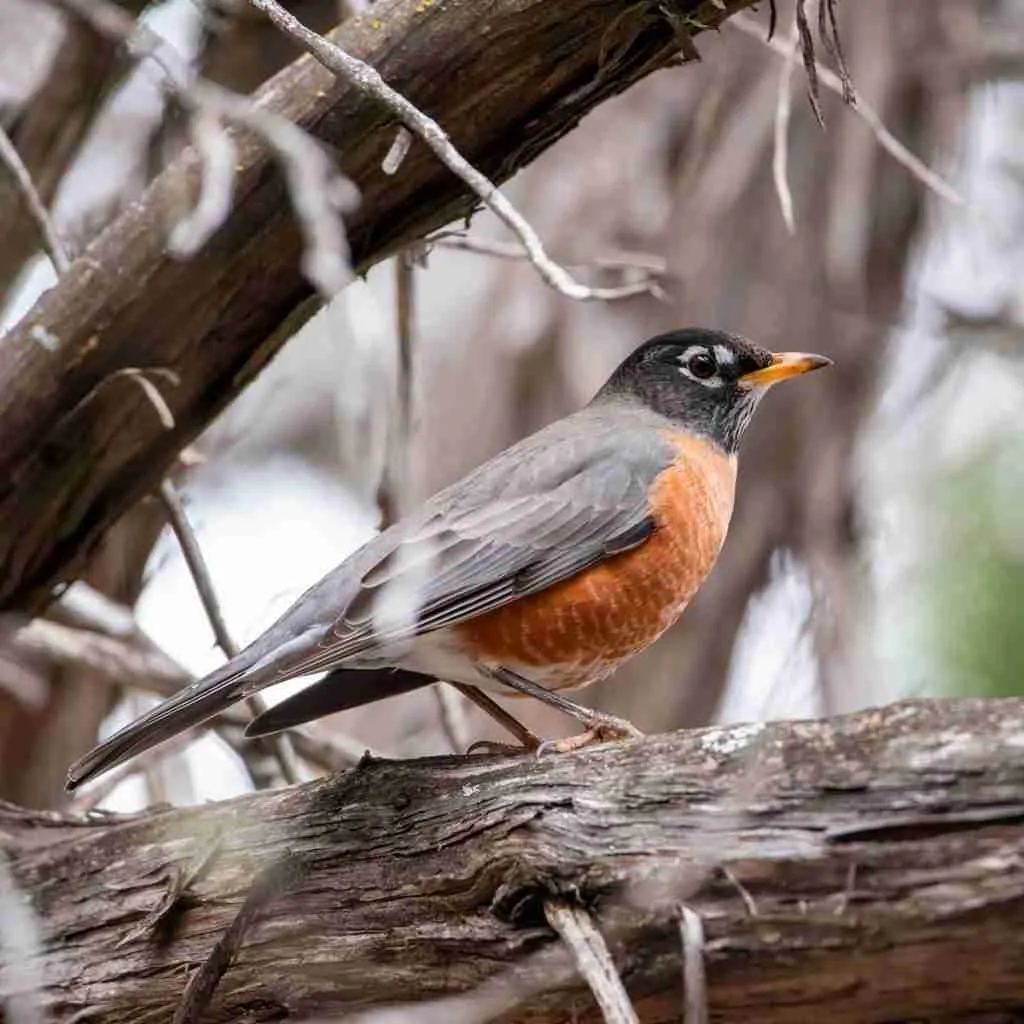
The American Robin is a common bird found across North America. Robins are easily identified by their orange breast, gray back, and white belly. These birds are about 16 cm long with a wingspan of about 30 cm. Male and female robins look alike.
Robins eat mostly insects but will also eat berries. Robins are found in woods and gardens near trees. They build their nests in trees or on porches and lay about three to five eggs.
Robins are active during the day and sing beautiful songs. You’re most likely to hear them singing at dawn or dusk. During the winter, robins will form flocks and can often be seen in trees or on lawns looking for food.

18.) Chipping Sparrow
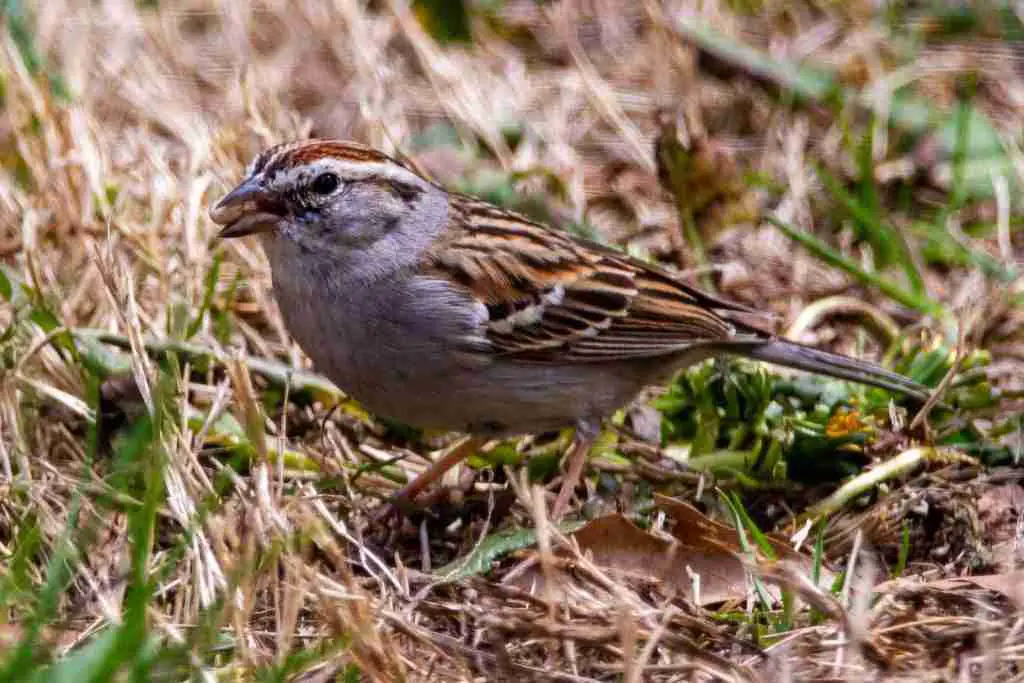
Chipping Sparrows are small songbirds with brown upperparts and streaked grayish-brown underparts. They have a white eyebrow, chestnut crown, and black throat.
Their bill is short and pointed. Chipping Sparrows breed in open woodlands, brushy areas, and suburban neighborhoods across North America.
They forage on the ground for insects and seeds. Chipping Sparrows are about five inches long and weigh less than an ounce.

19.) Eastern Bluebird
(Sialia sialis)
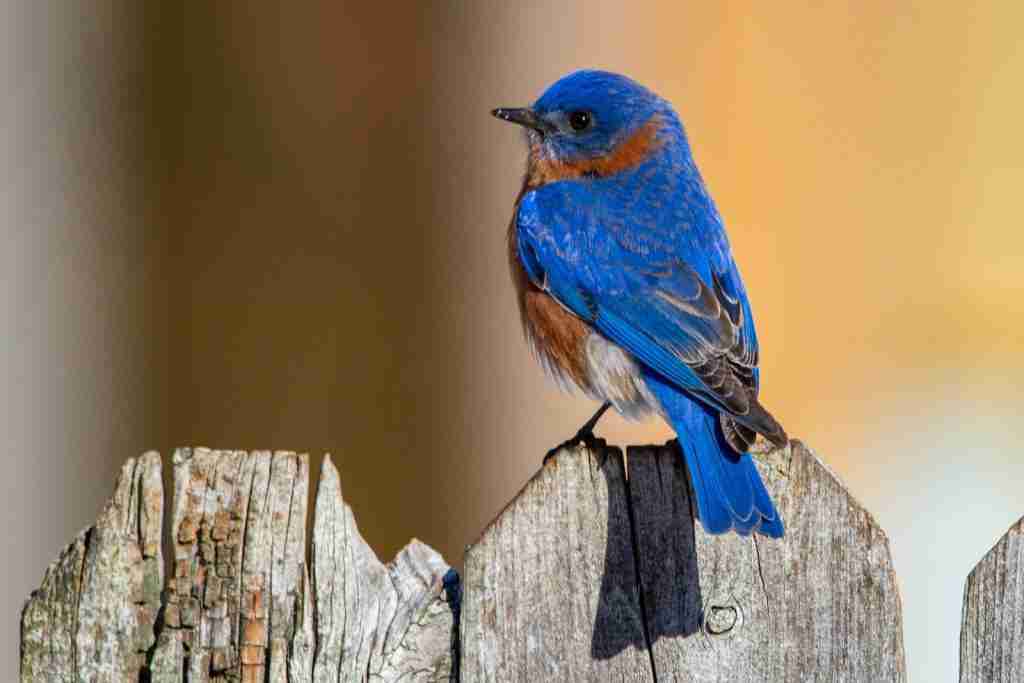
The Eastern Bluebird is a small thrush found in open woodlands, farmlands, and orchards. It is the state bird of Missouri and New York. The adult male has a brilliant blue back, wings, and tail, with an orange-red breast.
The adult female has a blue-grey back and tail, with a light grey breast and orange-red throat. Both sexes have white bellies. They are about six to seven inches long, with a wingspan of nine to ten inches.
The Eastern Bluebird eats insects, berries, and fruits. It perches on branches or in trees, waiting for prey to come within range. It also forages on the ground for food.
The Eastern Bluebird nests in tree cavities, using grass, leaves, and twigs to build its nest. The female lays three to seven eggs, which hatch after about two weeks. The young birds leave the nest after about three weeks.

20.) House Finch
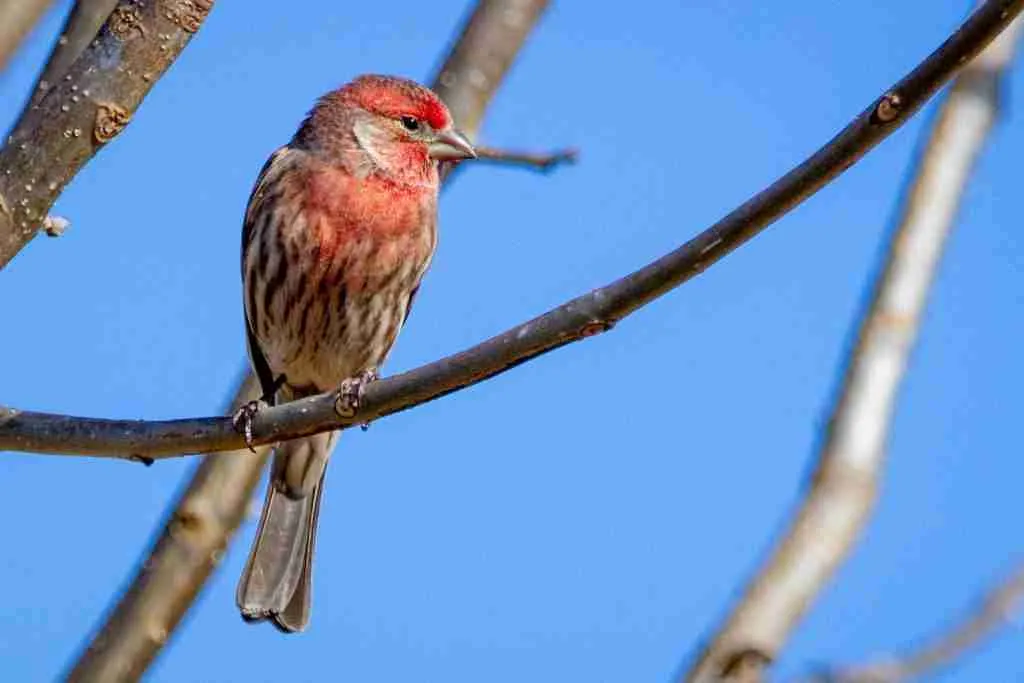
The house finch is a small bird with red on its head, breast, and back. It is about five inches long with a wingspan of eight inches. The house finch lives in the eastern United States and Canada. It eats black oil sunflower seeds and insects. The house finch builds its nest out of twigs and grasses. It lays three to five eggs. The house finch is a very social bird. It often nests in colonies with other house finches.

21.) House Sparrow
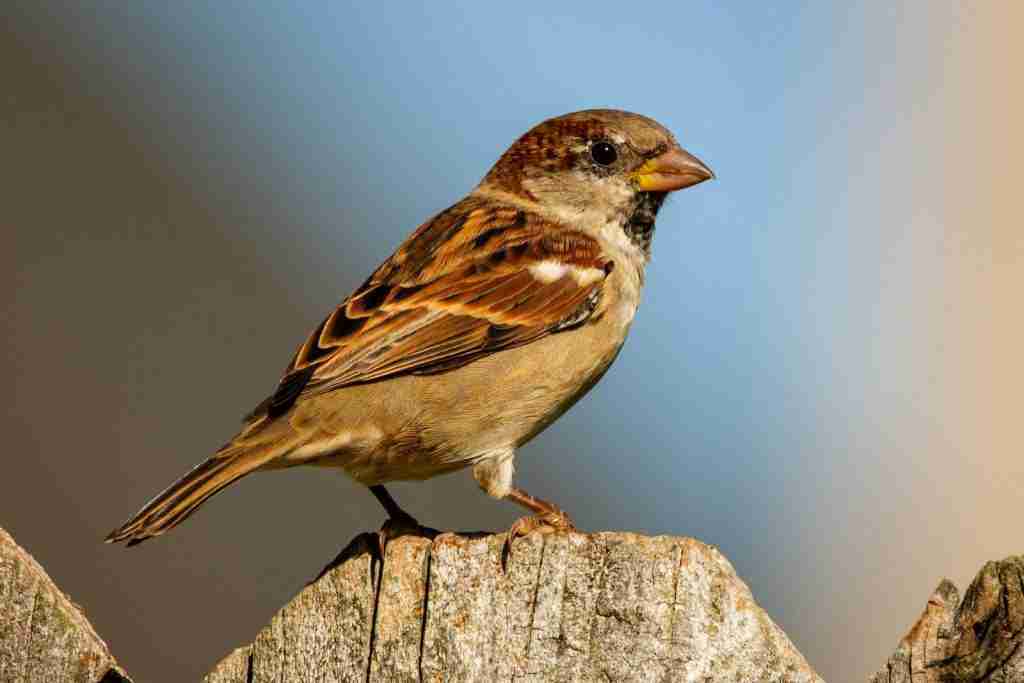
These sparrows are one of the most easily identified birds in Maine. They have a streaked brown back and buff underparts with a grayish head. Males also have a black bib.
These sparrows are seed-eaters and are often found near human habitation, making them one of the most familiar bird species in the world. House Sparrows are small birds, measuring only about five to six inches in length. They have a wingspan of seven to eight inches.
Their habitat is typically open areas near human settlement, such as farmland, parks, and suburban neighborhoods. House Sparrows are not shy birds and will often approach humans for food. They can be very aggressive towards other bird species, especially during the nesting season.
House Sparrows typically lay three to seven eggs per clutch. Both parents help care for the young birds until they are old enough to fend for themselves. These sparrows can live up to 15 years in the wild, but most only live for two to three years.

What birds are in Maine right now?
Maine is home to many different types of birds, and right now you can find species like the American crow, black-capped chickadee, and northern cardinal. There are also a variety of waterfowl that can be found in Maine at this time of year, including ducks, geese, and swans.
What is a popular bird in Maine?
The most popular bird in Maine is the chickadee. Chickadees are small, sprightly birds that are common in woodlands and forests. They are known for their cheerful song and their ability to adapt to human activity. Chickadees are one of the few bird species that actually benefit from living near humans.
How many species of birds are in Maine?
There are an estimated 270 species of birds that can be found in Maine. This number includes both year-round residents as well as those that only visit during the summer months. Some of the more popular birding spots in the state include Acadia National Park, Merryspring Nature Center, and Bradbury Mountain State Park.
What kind of big birds are in Maine?
The most common big bird in Maine is the turkey. Other big birds include the Bald Eagle, Great Blue Heron, and Osprey.
How do I identify a bird in my backyard?
The best way to identify a bird in your backyard is by its appearance. Look for the following: size, shape, color, and behavior. You can also use binoculars or a spotting scope to get a better look. If you’re still not sure, try listening for the bird’s call. Once you’ve determined what kind of bird you’re dealing with, you can consult a field guide to get more information.
Another way to identify birds is by their habitat. If you live near a forest, chances are you’ll see different kinds of birds than if you live in the city. Pay attention to where the bird is and what kind of environment it’s in. This can give you some clues as to what kind of bird it might be.
Finally, keep in mind that some birds are migratory. This means that they only visit certain areas at certain times of the year. If you see a bird in your backyard that you don’t recognize, it’s possible that it’s just passing through and you won’t see it again. Consult a field guide or ask a local birdwatcher to find out more.
What birds can I find in my backyard?
One of the most common backyard birds is the American robin. These plump birds are easily identified by their orange breast and cheery song. Robins eat insects and fruits, so you may see them hopping around on the ground looking for a tasty treat.
What kinds of birds live in Maine?
There are many different types of birds that call Maine home. Some of the more common species include black-capped chickadees, northern cardinals, American goldfinches, and ruby-throated hummingbirds. However, Maine is also home to less common bird species such as hermit thrushes, boreal chickadees, and spruce grouse.
What is the most common backyard bird?
The most common backyard bird is the sparrow. Sparrows are small, brown birds that can be found in nearly every corner of the world. In North America, there are over 20 different species of sparrow.
Backyard Bird Feeders
One of the best ways to attract birds to your backyard is by putting out a bird feeder. Bird feeders come in many different shapes and sizes, but they all serve the same purpose: to provide food for birds.
The type of bird feeder you choose will depend on the kinds of birds you want to attract. For example, if you want to attract finches, you’ll need a different type of feeder than if you want to attract cardinals.
There are many different types of bird food available, but the best way to find out what your local birds like is to experiment. Try different types of seed and see which ones the birds prefer.
You can also put out fruits, nuts, and suet. Be sure to clean your bird feeders on a regular basis to prevent the spread of disease.

An avid ornithologist, zoologist and biologist with an unwavering passion for birds and wild animals.
Dr. Wilson’s journey in ornithology began in childhood and led him to obtain a Ph.D. in Ornithology from the prestigious Avian Research Institute. He has worked closely with renowned experts in the field and conducted extensive research and field studies globally.

